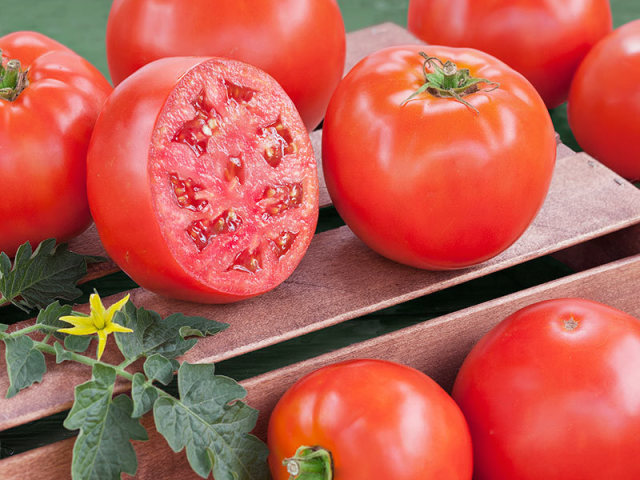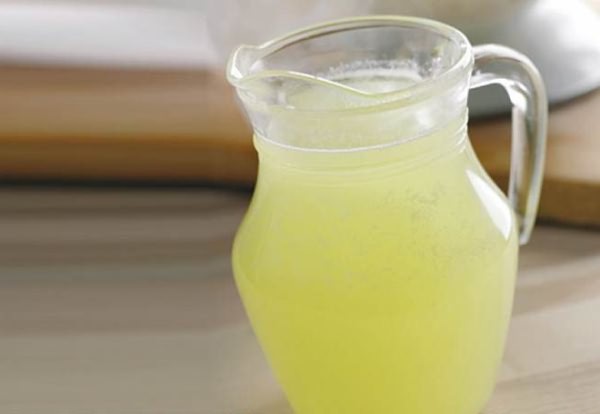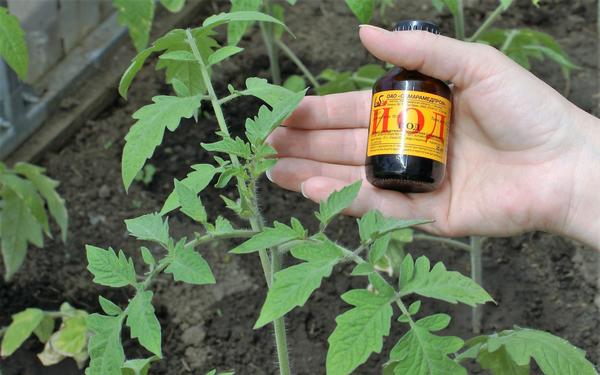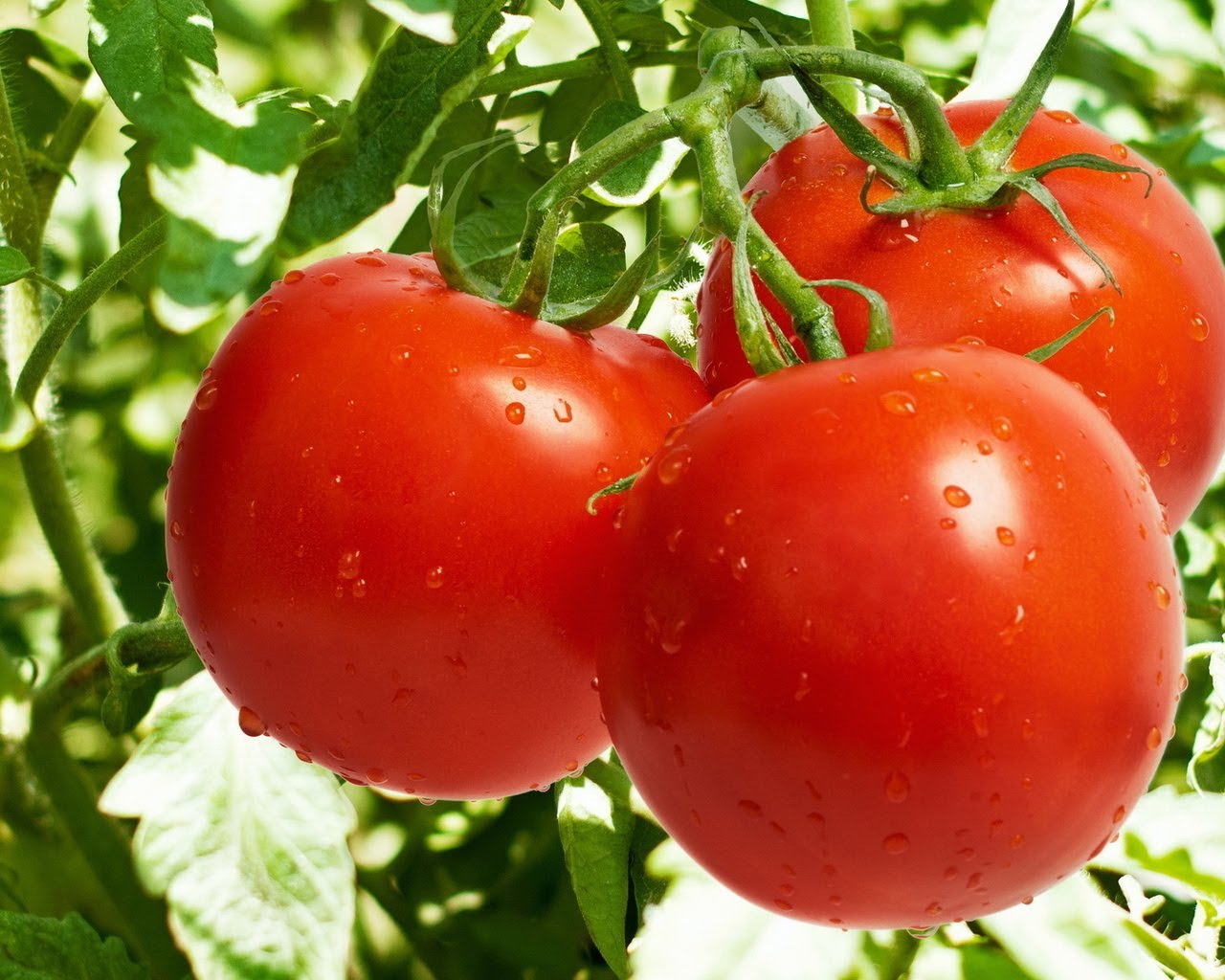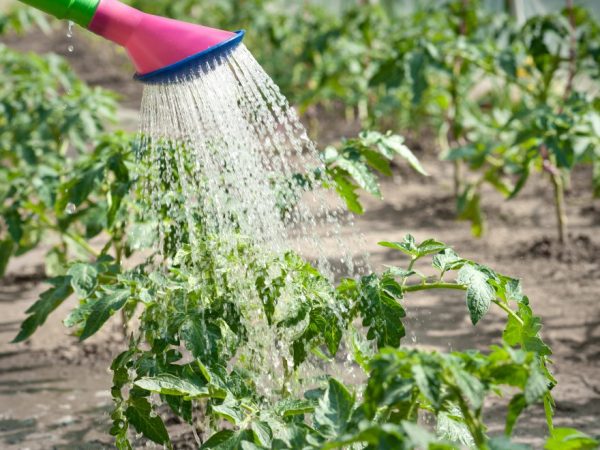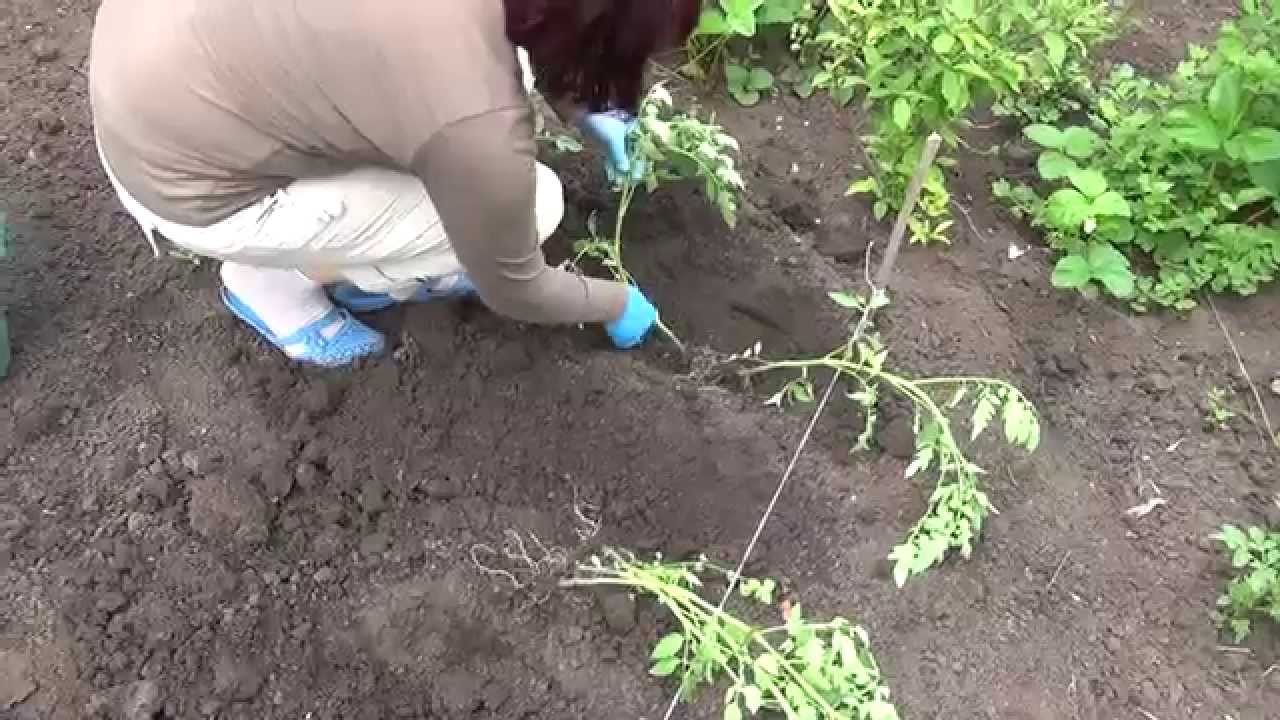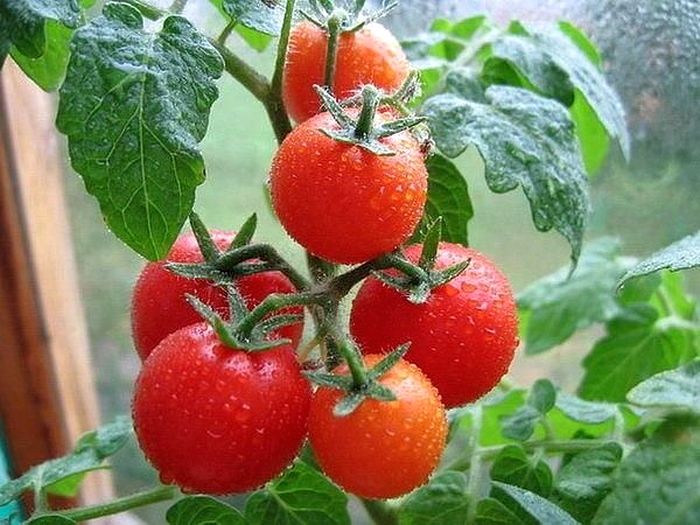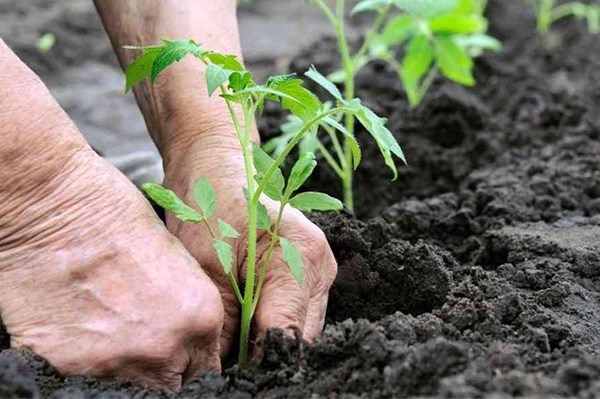Content:
To obtain a bountiful harvest of ground tomatoes, you need to know how to feed the tomatoes after planting in the ground, because feeding is provided by:
- strong root system;
- strengthening immunity to disease;
- the formation of ovaries;
- improving soil structure;
- protection from weeds and pests.
Correct feeding of tomatoes after planting in the ground according to the classical scheme gives an effect both in the greenhouse and in the open field.
The classic scheme for feeding ground tomatoes
You need to carry out top dressing correctly. You need to know the timing of how to fertilize tomatoes, the dosage of organic matter to prevent oversaturation.
Fertilizing tomatoes after planting consists of six stages:
The first stage is feeding the seedlings. You will have to feed tomato seedlings five times before planting in open ground or a greenhouse:
- for a faster growth rate of small leaves - for 40 seedling pots, mix two types of fertilizers "Nitrofoska" / "Agricola3"Or" Agricola "/" Forward "½ tsp in 1 liter of water;
- if only the stems are pulled out, and the growth of the top is not observed, it is necessary to fertilize the young with superphosphate, preparing a solution of 1 tbsp. 3 liters. water;
- watering with "Nitrofoskaya" for active growth and development of immunity a week after the second feeding - 1 tbsp. dissolve in 10 liters of water and pour at the rate of ½ cup per pot;
- to strengthen the root system of young tomatoes, feeding is carried out after 10 days - in 10 liters. Dissolve 1 tablespoon of potassium sulfate in water and water the seedlings abundantly;
- foliar feeding should be carried out after 11 days with the same solution as in the fourth stage, just do not water the seedlings, but spray.
Home agronomists, based on their practice, advise feeding young tomato shoots with yeast so that the young growth has a thick stem, because such seedlings will quickly take in the open field and the growing season will begin faster. Seedling Yeast Balm Recipe: One packet of yeast + sugar + warm water. Make a dough, dissolve in water (10 l.). Water each sprout using ½ liter. yeast balm.
The second stage is soil preparation before planting seedlings. The goal is to improve the structure of the soil by enriching it with manganese and potassium. Manganese contributes to soil disinfection and, in the future, improves the development of the root system of tomato bushes. Potassium is essential for:
- better development of leaves and shoots;
- the earliest possible rooting of tomato seedlings after planting;
- ensuring invulnerability to disease;
- improving the taste of tomatoes;
- acceleration of maturation;
- help in resisting low temperatures.
To enrich the soil with potassium, use potassium humate one week before planting. Prepare a solution: 500 ml. potassium humate per 10 liters. water and cultivate the soil in the beds.
Rules for watering holes before planting seedlings: prepare a manganese solution: 3 g per 10 liters. hot water and pour the wells with hot solution, after 20 minutes. plant tomato seedlings in the ground.
Planting seedlings in open ground should be carried out when the soil is heated to 15 ° C.
The third stage is the first complementary food after planting tomato seedlings in the ground.The goal is to help the seedlings take root faster, build up green mass, and also to form immunity to various diseases and pests. Top dressing can be carried out in two ways - foliar 7 days after planting and / or 3 weeks by root.
Foliar method - spraying young bushes through a spray bottle with a solution prepared from serum (1 liter), iodine (10 drops) and water (9 liters).
Serum is a storehouse of vitamins and minerals, proteins and lactose, it actively suppresses fungi and bacteria, protects against phytophthora, which is active in wet weather. The serum forms a thin film on the leaf surface and pathogens cannot break through.
Iodine, with its antimicrobial effect, contributes to the resistance of seedlings to disease.
By the root method, each bush is fed according to the following recipes:
- superphosphate 20 g + a glass of ash + a glass of compost;
- 15 ml. top dressing "Signor Tomato";
- dry yeast 30 g + sugar 40 g + liquid manure 1 l. + ash 200 ml. = 12 l. water. You get a concentrated solution that must be diluted - 1 liter. 9 liters. water. Apply ½ l for each bush. top dressing;
- urea solution - 10 liters. water 25 g - 700 ml for each bush.
- solution "Nitroammofoski" - 10 liters. 20 g - ½ l each under a bush.
- "Nitrofoska" 20 g + liquid fertilizer "Ideal" 1 tbsp. + water 10 l. - ½ l each under a bush.
The fourth stage is feeding at the beginning of flowering. The goal is to enrich plants with nutrients, including phosphorus, potassium, calcium, magnesium, boron, iron and sulfur. This stage is one of the most important, since top dressing during flowering will guarantee a bountiful harvest and excellent taste of tomatoes.
How to fertilize tomatoes after planting, during the beginning of flowering of tomatoes? It is best to carry out root dressing using complex fertilizers, such as: "Kemira Lux", "Universal", "Signor Tomato", "Effekton", "Solution". You can prepare a complex feeding yourself: dry droppings (25 g) + water (500 ml), stir until completely dissolved + superphosphate (1 tsp) + potassium sulfate (1 tsp). The resulting concentrate is diluted 1:10. Apply complex fertilizers by ½ l. under the bush.
Herbal infusion is a good help. In a 200 l barrel. insist for 10 days: any herbs and nettles (5 buckets), mullein (10 l.), fresh yeast (1 kg.), wood ash (1 kg.) and whey (3 l.). Pour the ingredients with water to the top. Use 1 liter of infusion during flowering. on the bush.
It is important to consider:
- all necessary trace elements and nutrients must be present in the feeding during flowering;
- fertilizers containing chlorine and its components must not be used;
- it is necessary to carefully read the composition of complex fertilizers.
The fifth stage of feeding is carried out during the formation of fruit ovaries. The goal is to provide tomatoes with phosphorus, potassium and nitrogen to restore the balance of nutrients that contribute to the further ripening of fruits. It is best to feed during the appearance of flowers on the third brush.
Top dressing recipes:
- bird (chicken) droppings (10 kg.) + water (5 l.). Insist for three days. Dilute the resulting concentrate in a ratio of 1:10 with water. Bird droppings are a source of nitrogen.
- sodium humate (1 tablespoon) + nitrophoska (1 tablespoon) + water (10 liters).
These dressings are used for root foods. 1 bush needs 0.8-1 liters. feeding.
For spraying use:
- boric acid - dissolve ½ package in 5 liters. warm water;
- nettle infusion - insist nettle for 10 days.
- superphosphate (2 tablespoons) + hot water (1 liter), insist 12 hours, bring water to 10 liters.
The sixth stage is feeding during fruiting. The goal is to replenish reserves of phosphorus and potassium, increase the taste characteristics of fruits and increase yields, as well as to protect against powdery mildew.
For powdery mildew, a solution of iodine and ash is used: dilute 1 kg. ash in 7 liters. boiling water, leave for a day, add 3 liters. water, 1 bottle of iodine (10 ml.) and 10 g of boric acid. Apply 1 liter. solution on the bush.
For complex feeding, choose one of the following recipes:
- slurry of manure or droppings (1 liter) + 1 tbsp. one of the complex fertilizers ("Azofoska", "Ideal", "Solution") + copper sulphate (1 g). Introduce 1.5 liters at the root of the bush;
- superphosphate (1 tbsp.) + water (10 l.) - 1 l. on the bush;
- sodium humate (10 ml.) + superphosphate (30 g.) + water (10 l.) - 1 l. on the bush.
For spraying, use a boric solution at the rate of 1 g of boric acid per 1 liter. water. Boric solution will make the fruit sweeter.
The above classic scheme for feeding tomatoes answers the questions of novice gardeners, how and with what, in what sequence to fertilize ground tomatoes, as well as achieve high growth rates after planting, and get a bountiful harvest.
Signs of nutritional deficiency
During the planting of tomatoes in the ground and throughout the entire cultivation period, it is necessary to examine the bushes to identify a lack of nutrients and diseases.
| Lack of substances (-) | Description of appearance | Top dressing |
|---|---|---|
| (-) nitrogen | * lower leaves turn yellow; * small new leaves; * color of green mass - yellow-green | ammonium nitrate (10 g) + ash (2 tablespoons) + water (5 liters). This amount is calculated for 1 sq. M. root watering. |
| (-) potassium | * yellow border on the lower leaves of the bush; * dying off of the lower leaves; * twisting of young leaves; * stop in the growth of the bush; * uneven color of fruits | folk remedy without chemistry: for better assimilation of nitrogen and providing tomatoes with potassium, take banana peel (3 pcs.) and pour boiled warm water (3 l.). Let it brew for 3 days. |
| (+) phosphorus | * bluish-green shade of leaves; * curling of leaves inward; * purple stem; * bush does not grow in height; * slowing down of fruiting; * color of fruits with bronze tint | superphosphate - mineral fertilizer |
| (-) zinc | * yellow specks on the leaves; * new leaves are yellow and curled; * delay in flowering | foliar feeding with zinc sulphate solution |
| (-) magnesium | * rolling of the lower leaves outward; * leaf death. | foliar feeding with magnesium nitrate solution |
| (-) calcium | * yellow scorch marks on new leaves; * the top of the bush dies off; * rot spots on the fruits; * the growth of the bush slows down | dissolve 15 gr. "Brexil calcium" in 10 liters. water and apply root application 2 times after 14 days |
| (-) sulfur | * bluish-red streaks on the upper leaves; * the stem becomes thin | foliar feeding with colloidal sulfur |
| (-) boron | * the leaves at the top of the bush are very light; * the curvature of the top of the bush downward; * the appearance of brown veins on the leaves on the leaves; * poorly formed ovaries; * brown spots on the fruits | spray with boric acid solution |
| (-) iron | * leaves turn yellow at the base; * top leaves are yellow-white; * bush growth slows down | dissolve in 10 liters. water "Iron Chelate" (5 g) and add 1.5-2 liters. under 1 bush 2 times in 14 days |
For sick tomatoes and to protect against diseases, it is better to use foliar dressing, and for healthy tomatoes, root dressing is recommended.
Recommendations for feeding
- To carry out top dressing in clear weather early in the morning or in the evening.
- When applying fertilizers in root dressing, make sure that the funds do not fall on the leaves - this causes burns and death of the bush.
- Spraying can be carried out in any weather, but best of all in the evening.
- The amount of top dressing depends on the size of the bush and the period of carrying out (planting in the ground, flowering, fruit set and fruiting).
- In a stepwise feeding, try to alternate the use of organic and mineral substances.
- Do not spray the green mass of tomato bushes with plain water - there is no benefit, on the contrary, you can provoke fungal diseases and late blight.
- Strictly observe the dosage of mineral and organic fertilizers when preparing feedings on your own. Over-saturation with organic matter leads to the violent development of green mass and poor fruit set. An excessive amount of mineral fertilizers will lead to dehydration of the soil and the plant itself.
- It is better to use natural ingredients without chemicals for feeding.
- Stop all types of dressing 2 weeks before harvesting.
The use of minerals in top dressing of garden and horticultural crops should be limited, as there is an accumulation of nitrates, especially for the cultivation of tomatoes and peppers.
Folk recipe for feeding tomatoes
Bread infusion stimulates the growth of tomato seedlings, develops the root system, therefore it is used in root watering.
Recipe: place brown bread rusks on 2/3 of the bucket volume, pour water, make oppression so that the bread sours well and does not float. Put the sourdough bucket in a warm place for 1 week. Dilute the resulting starter culture for irrigation in a 1: 3 ratio with water.
Fertilizing the bushes every 10 days, starting from the moment of flowering and until the beginning of fruiting.
Bread tincture helps to get a high yield of not only tomatoes, but also cabbage, eggplant, and pepper.
